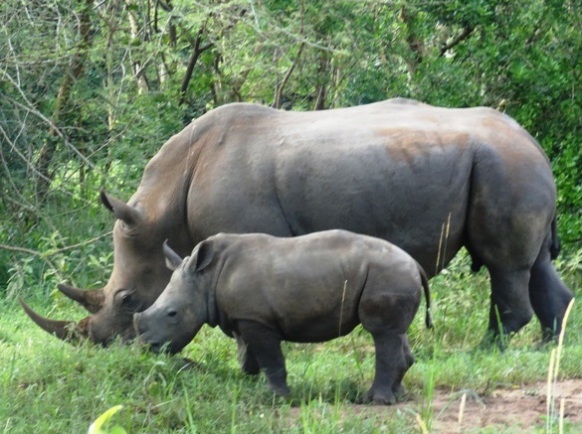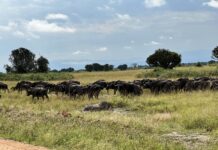Last week as Uganda joined the rest of the world to celebrate the world wildlife day, one of the key aspects which was looked at was the reintroduction of extinct wildlife species. The theme of the celebrations was “sustaining all life on earth- animals and plants being the core of tourism industry should stand and develop”.
Uganda wildlife Authority(UWA)’s deputy director of community conservation said that the theme hold lots of water since wildlife plays a very big role in the maintenance of the ecosystem and henceforth by protecting it is protecting human beings.
For now, Uganda has ten national parks, 12 wildlife reserves, five community wildlife management areas and 13 wildlife sanctuaries which are managed Uganda Wildlife Authority.
According to Owoyesigire the director of community conservation, Uganda had a massive number of wildlife species but their number lowered in the 1980 because of the civil wars that prevailed within the country. For example the number of elephant dropped to 2,500 in 1999 from 30,000 in 1960, the buffaloes to 17,000 from 60,000 individuals. At the turn of the new millennium where Uganda embarked on the conservation and preservation of wildlife species the elephants and buffaloes have increased to 6,000 and 40,000 respectively.
When Uganda was still in the turmoil, the animals which were greatly affected were the rhinos. Uganda had both white and black rhinos. They all got extinct until recently Zziwa rhino sanctuary was established and we was witnessed the reintroduction of the white rhino in the wild.
The report constructed in 2018 on wildlife resources show that there have an upsurge in the number of wildlife species as most of them have doubled their numbers since 1995 due to the establishment of a formal tourism sector. For instance the mountain gorillas have increased from 219 to about 459, the chimpanzees in tropical rain forests of Uganda escalated from about 3,000 to about 5,000. The number of Uganda kobs also rose at the great number.
The UWA official said the biggest problem or challenge for wildlife conservation and preservation is human encroachment on the natural habitats where the wildlife species call their home.
Due to the population explosion, the natural habitats where the wildlife species live have been cleared for settlement and used as farmlands. It is indicated that 50% of the wildlife species live outside of the gazatted areas and these outside areas are owned by the communities who use them for cultivation thereby clearing the forest and bushes in which the wildlife thrives.






